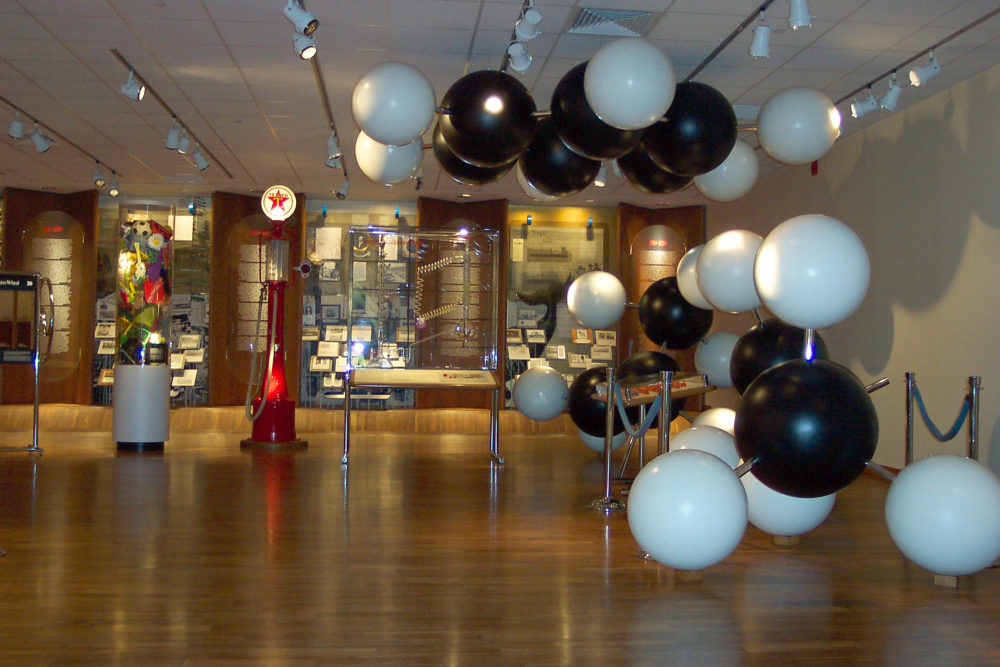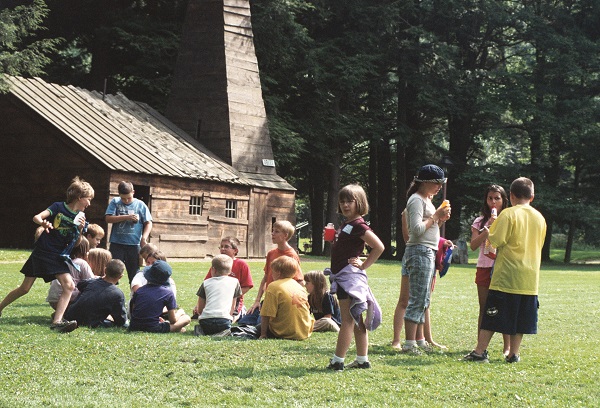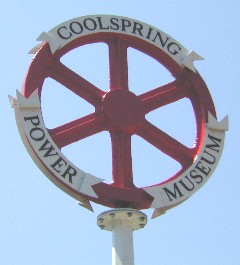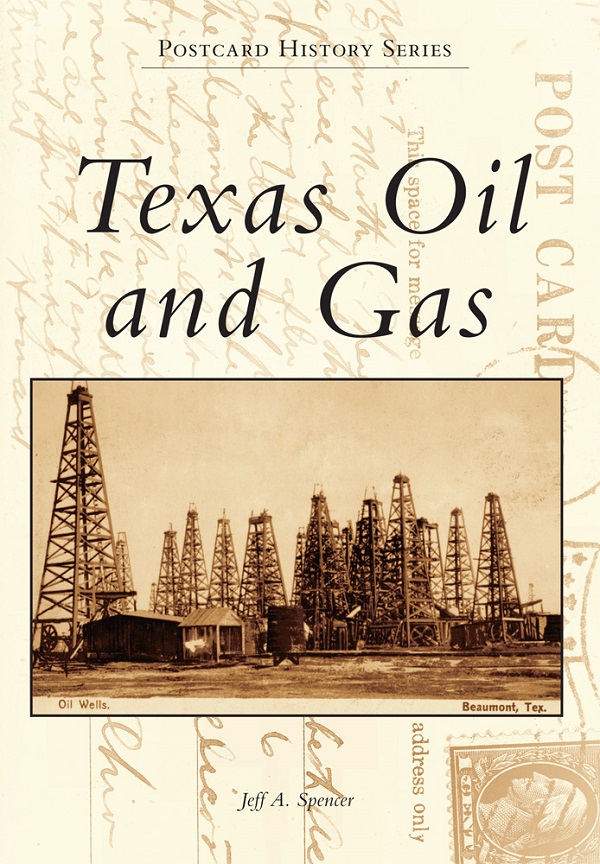Summer Travels to Oil Museums
Visiting America’s many petroleum museums is easy.
Summertime brings new visitors to community oil and gas museums, including teachers and students anticipating the return of field trips and K-12 programs as the school year approaches. The American Oil & Gas Historical Society advocates visiting these frontline energy educators.
Whether visited on vacation or during the school year, petroleum museums in Texas , Oklahoma, California, and Pennsylvania offer earth science and other petroleum-related exhibits. Visitors to all of oil and gas museums often are met by volunteer docents — retired petroleum geologists, engineers, or other oilfield professionals.

Petroleum exhibits educate visitors to the Texas Energy Museum in Beaumont, where a 1901 oil discovery at Spindletop Hill launched the modern petroleum industry. Photo by Bruce Wells.
In Texas, the Petroleum Museum in Midland includes many summer energy education programs for kids, as does the Ocean Star, an offshore rig museum in Galveston. Many community museums also are part of annual “derrick festivals,” which take place in Taft, California (West Kern Oil Museum), and other states with oil and gas production.
Alabama has a small county museum in Gilbertown with an “old Hunt oil rig” similar to the one that discovered the first oilfield in Alabama in 1944.
Further, many oil patch communities celebrate their petroleum heritage every summer with parades, special events, and museum tours.

Visitors to the Drake Well Museum at Oil Creek in Titusville, Pennsylvania, can tour a replica of Edwin L. Drake’s cable-tool derrick and steam engine house among other outdoor exhibits. Photo by Bruce Wells.
For those interested in the industry’s exploration and production history and traveling this summer, check out these exhibits chronicling the nation’s discoveries.
Western New York boasts a museum in Bolivar with some of the nation’s earliest petroleum artifacts. While dairying and livestock have become the cash crops, the region still produces a small amount of very high-quality oil and natural gas, says Director Kelly Lounsberry. This museum tells the story of oil and natural gas production in the region.

Exhibits at a museum in Bolivar, N.Y., include oilfield engines, maps, documents, pictures, models and tools. Wonderful Wizard of Oz author L. Frank Baum once owned a petroleum products company there – and sold oil cans. Photo by Bruce Wells.
The first U.S. well specifically intended to obtain natural gas was dug near Fredonia by William Hart, who had noticed gas bubbles on the surface of a creek. In 1821, he dug a 27-foot well and built a “log pipe” to bring gas to nearby houses for lighting.
Hart’s work led to the formation of the Fredonia Gas Light and Water Works Company – the first U.S. natural gas company, according to the American Gas Association, Washington, D.C., which was founded in 1918.
Further, thanks to the region’s oilfield production, L. Frank Baum opened a petroleum products business in Syracuse, N.Y., in 1883. The future author of The Wonderful Wizard of Oz once sold buggy wheel axle grease — and oil cans (learn more in Oil in the Land of Oz).
Just to the south of Bolivar, there are many museums and historic attractions in the state where the modern industry began: Pennsylvania.
East of I-79 in northwestern Pennsylvania, the Drake Well Museum in Titusville exhibits “Colonel” Edwin Drake’s famous August 27, 1859, discovery well – today recognized as the first U.S. oil producer.
The Drake Well Museum’s outdoor exhibits include a recreation of the original cable-tool derrick Drake used. Among the most popular summer attractions for young students is the “Nitro” well-fracturing reenactment demonstrating the use of “go-devils” for fracturing a well.
Visitors also can stop by the museum gift shop to find a reprint of The Early Days of Oil, by Dr. Paul Giddens, considered to be the “Bible” of information about the birth of the U.S. petroleum industry. Many images in the book are from originals made by photographer John A. Mather and preserved at the museum.
Located on 270 Seneca Street in Oil City – in a Beaux Arts building listed in the National Register of Historic Places – the Venango Museum of Art, Science & Industry preserves the oil region’s industrial heritage. Its exhibits include a 1928 Wurlitzer Theater Organ.

Once a world-famous Pennsylvania boom town, visitors today can walk the grassy paths of Pithole’s former streets. Photo by Bruce Wells.
Another must-see oil history spot is the Pennsylvania Historical and Museum Commission’s Pithole Visitors Center — the site of a vanished 1865 oil boom town now managed by Drake Well Museum. The once infamous boom town is in Oil Creek State Park.
A dedicated group of railroad enthusiasts maintains the Oil Creek & Titusville Railroad, a nonprofit group that offers trips through the historic oil region. Near the railroad is the refurbished home of “Coal Oil” Johnny. Read his fascinating tale in the Legend of “Coal Oil Johnny.”

The Penn-Brad Oil Museum — and Historical Oil Well Park — is located three miles south of Bradford, Pennsylvania, on Route 219, near Custer City. Photo by Bruce Wells.
At nearby Oil City is a center dedicated to the study of the oil heritage region at Clarion University, Venango Campus. The Barbara Morgan Harvey Center for the Study of Oil Heritage contains hundreds of rare books of the region, newspaper clippings from the early 1900s, and even minutes from the meetings of early companies, maps, and photographs.
First Billion Dollar Oilfield
About 70 miles to the east of Titusville, the Penn-Brad Oil Museum (and historical oil well park) at Bradford takes visitors back to the early boom times of “The First Billion Dollar Oil Field.” Guided tours are conducted by retired geologists or petroleum engineers who volunteer their time to relate exciting first-hand experiences.
The museum in Custer City is three miles south of Bradford, along Rt. 219. Nearby is a refinery built in 1881 and still operated by the American Refining Group. The facility is considered the oldest continuously operating refinery in America.

The museum maintains stationary internal combustion engines for education and enjoyment. Photo by Bruce Wells.
Before leaving Pennsylvania, visit one of the world’s largest collections of oilfield engines. Century old “hit and miss” gas engines, vintage oilfield equipment, and early electric generators are among the permanent exhibits at a unique “power museum” in Coolspring.
With perhaps the largest 19th-century engine collection in the world, the museum is housed in 13 buildings with about 250 engines – many of them operational.
The Coolspring Power Museum is located east of Pittsburgh just off Route 36 midway between Punxsutawney to the south and Brookville to the north. According to longtime Director Paul E. Harvey, the collection presents an illuminating history of the evolution of internal combustion technology that put an end to the steam-powered era.
Twice a year engine collectors from around the country gather on the extensive grounds – and the “barking” of hundreds of antique engines lasts several days.
Community oil and gas museums are linked to the AOGHS website. Museum events and K-12 education efforts are featured alongside stories of America’s petroleum heritage.
_______________________________
The American Oil & Gas Historical Society preserves U.S. petroleum history. Please become an AOGHS annual supporter and help maintain this energy education website and expand historical research. For more information, contact bawells@aoghs.org. © 2025 Bruce A. Wells.
Citation Information – Article Title: “Summer Travels to Oil Museums” Authors: B.A. Wells and K.L Wells. Website Name: American Oil & Gas Historical Society. URL: https://aoghs.org/energy-education-resources/pennsylvania-petroleum-vacation. Last Updated: July 6, 2025. Original Published Date: May 7, 2013.




